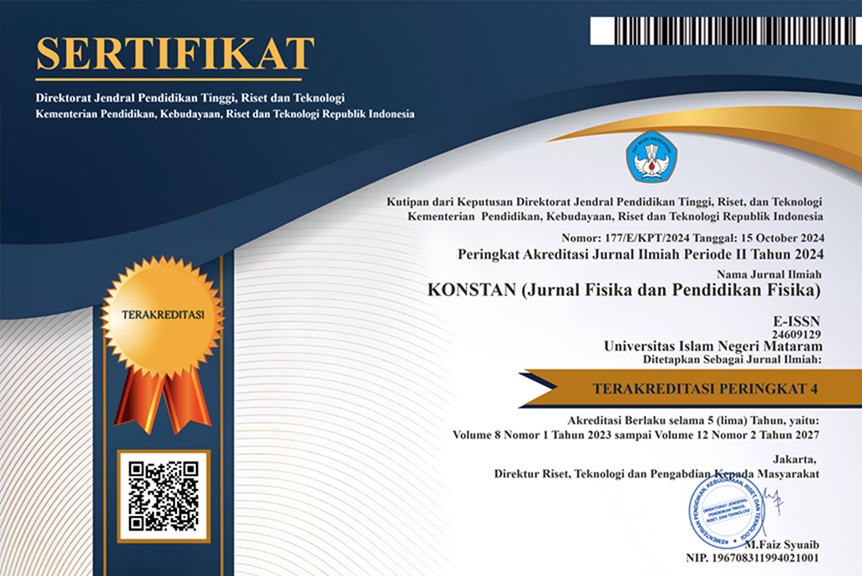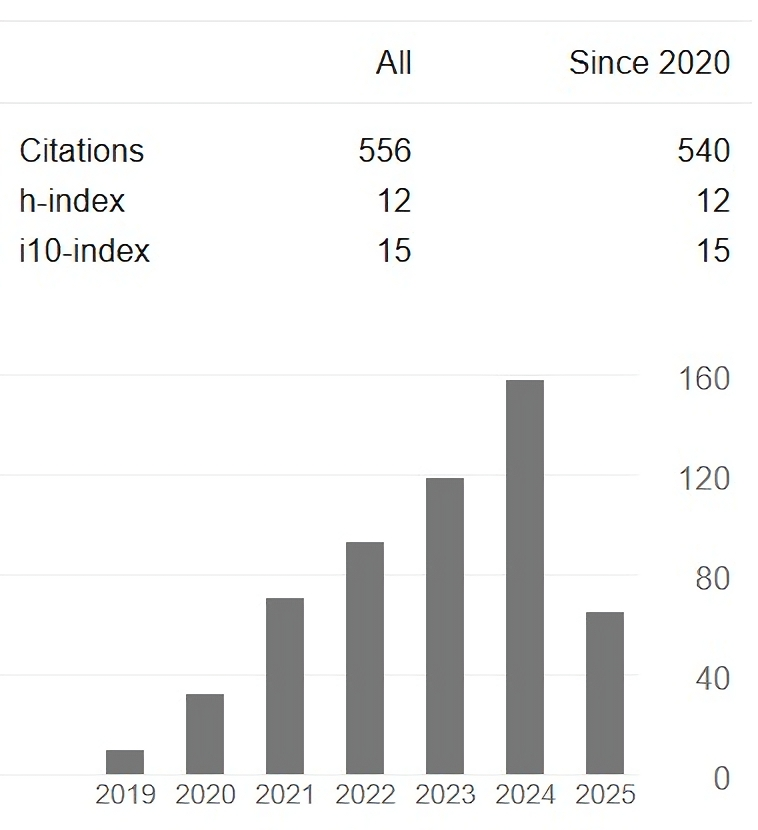Development of a VOC (Volatile Organic Compound) Measurement System to Identify Placebo Phenomenon in Emission Areas
Abstract
VOCs (volatile organic compounds) can be used as a biomarker of placebo phenomenon, such as stress, panic disorder, health conditions, and many others. VOCs from the exhaled breath have different concentration levels that are also related to many health diseases. However, the use of VOCs as biomarkers in exhaled breath are very limited. Hence, this study aims to develop a novel e-nose (electric nose) system based on a VOC measurement system to identify placebo phenomenon in emission areas. For this purpose, a digital semiconductor VOC sensor and a microcontroller were used to detect VOC level. The developed system was tested inside a chamber for the initial calibration and comparation steps using fresh air and a comparator device. After calibration, the system was used to measure the VOC concentrations of 20 exhaled breath samples in the emission sampling areas (control and emission sources). In other sides, the VOC levels surrounding the emission areas were also measured using the comparator device. The placebo levels (PLS) of the exhaled breath samples were divided into PLS(-) or placebo negative and PLS(+) or placebo positive related to the placebo conditions. The sampling areas were divided into indoor and outdoor areas to identify the different placebo percentages and the dependence related to the emission levels. The results show that the emission levels of the emission sources are about 504-528 ppb, meanwhile, the control area (clean area) has <10 ppb of VOC levels. A higher VOC concentration, a higher PLS(+) percentage. The exhaled breath of PLS(+) samples contain >78 ppb of VOC levels, while PLS(-) samples has < 78 ppb of VOC levels (p < 0.05). It can be concluded that VOC concentrations in the emission sources has a potential to influence the placebo quantification in human psycological health. The developed e-nose system can be used to identify VOC levels as a biomarker of a placebo phenomenon.
Downloads
References
[2] P. A. Owusu and S. A. Sarkodie, “Global estimation of mortality, disability-adjusted life years and welfare cost from exposure to ambient air pollution,” Science of the Total Environment, vol. 742, no. 2, p. 140636, 2020, doi: 10.1016/j.scitotenv.2020.140636.
[3] A. Y. P. Wardoyo, J. A. E. Noor, G. Elbers, S. Schmitz, S. T. Flaig, and A. Budianto, “Characterizing volcanic ash elements from the 2015 eruptions of bromo and raung volcanoes, Indonesia,” Pol J Environ Stud, vol. 29, no. 2, pp. 1899–1907, 2020, doi: 10.15244/pjoes/99101.
[4] K. Al Hadi, A. Y. P. Wardoyo, U. P. Juswono, A. Naba, A. Budianto, and E. T. P. Adi, “A Study of Erythrocyte Deformation Level Related to Biomass Burning Emission Exposures Using Artificial Neural Networks,” Pol J Environ Stud, vol. 31, no. 6, pp. 5037–5046, 2022, doi: 10.15244/pjoes/150643.
[5] A. A. Widhowati, A. Y. P. Wardoyo, H. A. Dharmawan, M. Nurhuda, and A. Budianto, “Development of a portable volatile organic compounds concentration measurement system using a CCS811 air quality sensor,” IEEE Xplore, pp. 1–5, 2021, doi: 10.1109/ISESD53023.2021.9501642.
[6] K. B. Schnelle Jr and C. A. Brown, Air pollution control technology handbook. CRC press, 2016.
[7] W. Zheng, K. Pang, Y. Min, and D. Wu, “Prospect and Challenges of Volatile Organic Compound Breath Testing in Non-Cancer Gastrointestinal Disorders,” Aug. 01, 2024, Multidisciplinary Digital Publishing Institute (MDPI). doi: 10.3390/biomedicines12081815.
[8] C. Jia, K. Cao, R. Valaulikar, X. Fu, and A. B. Sorin, “Variability of total volatile organic compounds (Tvoc) in the indoor air of retail stores,” Int J Environ Res Public Health, vol. 16, no. 23, 2019, doi: 10.3390/ijerph16234622.
[9] S. Tiwari et al., “Volatile organic compounds (VOCs): Biomarkers for quality management of horticultural commodities during storage through e-sensing,” Dec. 01, 2020, Elsevier Ltd. doi: 10.1016/j.tifs.2020.10.039.
[10] T. Z. Maung, J. E. Bishop, E. Holt, A. M. Turner, and C. Pfrang, “Indoor Air Pollution and the Health of Vulnerable Groups: A Systematic Review Focused on Particulate Matter (PM), Volatile Organic Compounds (VOCs) and Their Effects on Children and People with Pre-Existing Lung Disease,” Jul. 01, 2022, MDPI. doi: 10.3390/ijerph19148752.
[11] K. F. H. Hintzen et al., “Volatile organic compounds in headspace characterize isolated bacterial strains independent of growth medium or antibiotic sensitivity,” PLoS One, vol. 19, no. 1 January, Jan. 2024, doi: 10.1371/journal.pone.0297086.
[12] M. Yakob, D. Mustika, N. Sari, and R. Almi Putra, “Design and Development of Electronic Nose (E-Nose) to Detect Gastric Diseases (Gastritis and Dyspepsia) Through the Respiratory Tract,” 2021.
[13] M. Chen et al., “Neural mechanisms underlying placebo and nocebo effects in tonic muscle pain,” Neuroimage, vol. 300, Oct. 2024, doi: 10.1016/j.neuroimage.2024.120877.
[14] M. Wilhelm, S. M. Fischer, W. Rief, M. Fiorio, and D. Barbiani, “Generalization and enhancement of the effects of an active placebo nasal spray on sadness,” J Affect Disord, vol. 369, pp. 568–575, Jan. 2025, doi: 10.1016/j.jad.2024.10.045.
[15] B. Gros, J. Blackwell, J. Segal, C. J. Black, A. C. Ford, and S. Din, “Harms with placebo in trials of biological therapies and small molecules as maintenance therapy in inflammatory bowel disease: a systematic review and meta-analysis,” Lancet Gastroenterol Hepatol, vol. 9, no. 11, pp. 1030–1040, Nov. 2024, doi: 10.1016/S2468-1253(24)00233-4.
[16] L. Andreini, A. Y. Wardoyo, H. A. Dharmawan, M. Nurhuda, and A. Budianto, “A design of fine particle concentration measurement system based on a near field wireless radio communication,” AIP Conf Proc.
[17] F. Guo et al., “Impact of childhood exposure to traffic related air pollution on adult cardiometabolic health: Exploring the role of perceived stress,” Environ Res, vol. 263, Dec. 2024, doi: 10.1016/j.envres.2024.120130.
[18] N. A. Madani, L. E. Jones, and D. O. Carpenter, “Different volatile organic compounds in local point source air pollution pose distinctive elevated risks for respiratory disease-associated emergency room visits,” Chemosphere, vol. 344, Dec. 2023, doi: 10.1016/j.chemosphere.2023.140403.
[19] M. S. Hussain et al., “Unlocking the secrets: Volatile Organic Compounds (VOCs) and their devastating effects on lung cancer,” Mar. 01, 2024, Elsevier GmbH. doi: 10.1016/j.prp.2024.155157.
[20] Q. Shen, Y. Liu, G. Li, and T. An, “A review of disrupted biological response associated with volatile organic compound exposure: Insight into identification of biomarkers,” Oct. 20, 2024, Elsevier B.V. doi: 10.1016/j.scitotenv.2024.174924.




